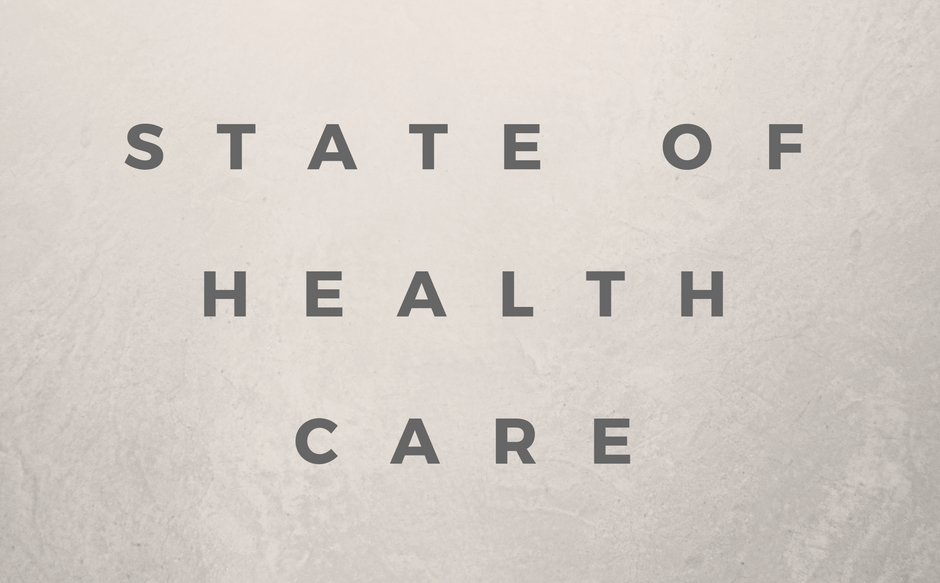Australian healthcare is a multifaceted landscape, which can be difficult for people to navigate. This article aims to identify four complexities within the system. This is important for patients, providers, and those seeking to make a tangible difference to the way we engage with healthcare. As IT Consultants, this has been important for us to understand so that we can benefit our clients to the best of our ability, and explore methods of reducing the impact of the complexities.
Reactive Care
For the majority of people, we see our doctor when something is wrong. Many people will notice symptoms that are either severe enough or last long enough to warrant a visit to the GP (General Practitioner). As a result our care is reactive, not proactive, and our GP only ever sees a “snapshot in time” of our health status. Our visits are purpose driven, with the goal of resolving the issue we are currently facing. A baseline health is difficult to establish due to the infrequent nature of our visits and to distinguish between current difficulties and our normal health.
Transparency
During my university years, I visited the on-campus doctor out of convenience, but for more serious issues I visited my family doctor that I had known for years. The family doctor had a much more in-depth knowledge of my medical history, and was preferred in situations that might require this knowledge. As a result, neither doctor had a holistic picture of my health. My university GP thought I must never get seriously sick after 5 years of no visits for these issues. My family GP believed that I rarely got sick, but if I did it was serious!
Unfortunately, healthcare is a fragmented system where there is little transparency between those involved in the care of a single patient. My story only covers half the issue in transparency. For many people with complex medical histories, many specialists may be involved as well. These doctors provide information regarding the area they have more knowledge in, but may not be in communication with other specialists. As a result, the GP becomes the “case manager,” hearing from specialists when they see the patient and asking the patient about recent visits during periodic visits. However, as you may know from personal experiences, GPs are often very busy (doctors are always running late), adding pressure and making it difficult for them to effectively manage every patient they see.
Funding
Have you ever been told you needed a procedure, only to find out the cost and wish you never got sick? No matter what aspect of healthcare it is, from dental to hip replacements, psychology to MRIs; healthcare is expensive. There are pros and cons to both public (free, but with limited-to-no choice of which doctor you see and when) and private (more choice, but often more expensive) systems; regardless many people will avoid visiting the doctor unnecessarily. Knowing when you should and shouldn’t visit the doctor would help us save time and money.
ED Visits
In avoiding visits to the doctor many people visit emergency departments. These services are generally free and allow people to obtain the support required. However, as a result our emergency departments are overrun, with not enough staff or beds to meet the need. Just last weekend I took a friend to emergency for complications relating to a spinal injury; we waited 4 hours for a bed and another 7 hours to see the consultant. The wait times indicate the pressure our healthcare system faces. Knowing when to visit ED and when it is okay to wait to see a GP would take immense pressure off our system.
Resolution: The Benefits of Continuous Health Monitoring
The answer to many of these issues is continuous health monitoring. With one avenue that continuously monitors health there is one party that plays the role of “case manager,” aware of the health of the patient at all times. Having multiple health readings allow GPs and Specialists to have a baseline of our health opposed to a single-snapshot that would allow them to make more accurate recommendations about our health. These baselines would also assist recommendations that are preventative opposed to reactive. Continuous monitoring alleviates some of the need for communication with doctors as all have access to medical history over time. Finally, visiting the doctor and GP only when necessary reduces the time and money we pour into healthcare.
This is why we have teamed up with ImagineCare to bring Telehealth to Australia. ImagineCare is a product currently available in the US. It provides continuous monitoring of patients health. Data is monitored by a team to ensure that any readings that cause concern are addressed, and the individual contacted. Making these data recordings available to a patients doctors ensures they are able to monitor and have access to baseline measurements, and make recommendations that are more specific to the patient. Patients receive messages or phone calls if there are concerns, which help reduce the number of ED visits.
Author: Alyssa Baker


